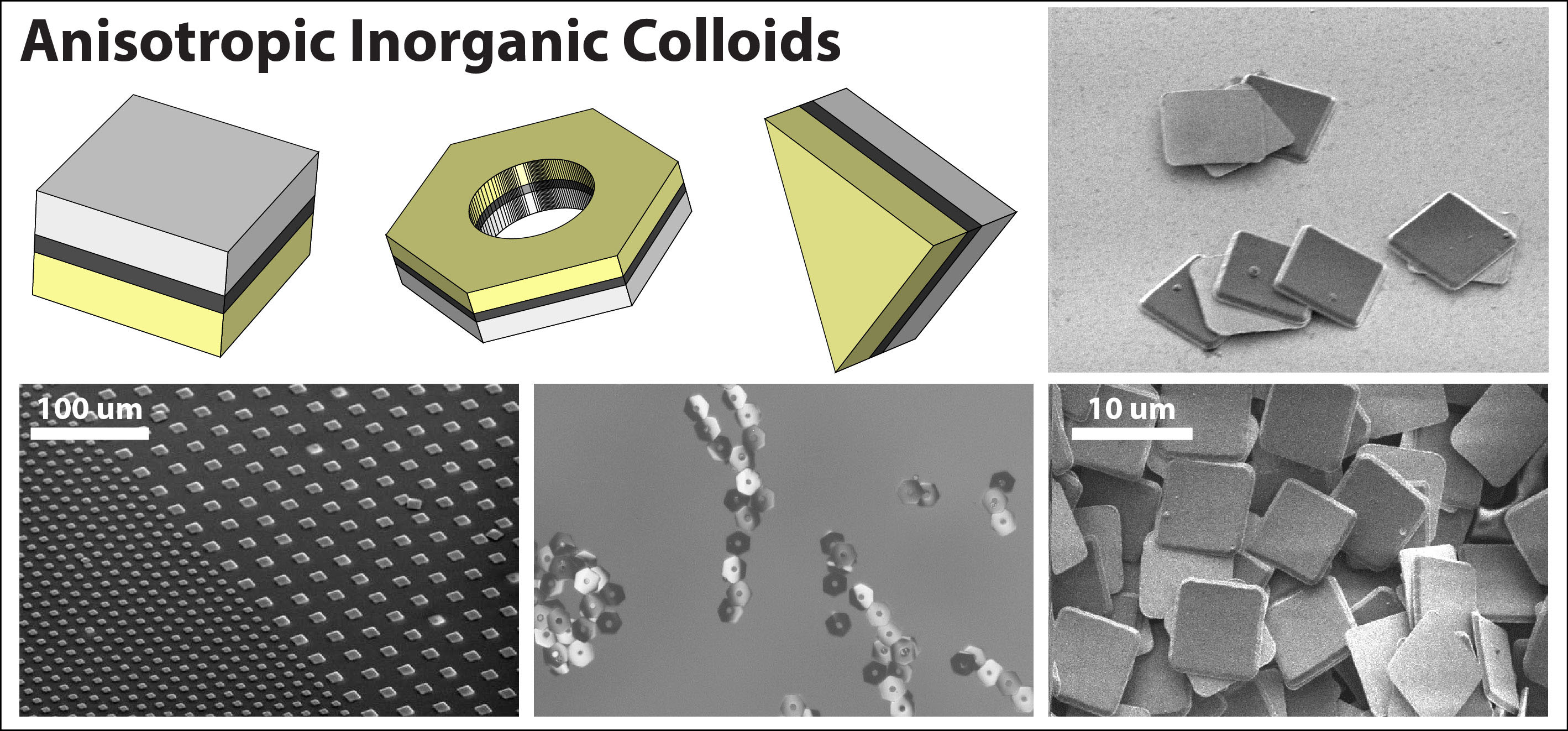Research
Multicomponent Anisotropic Colloids
The goal of this project is to develop highly efficient and flexible approaches for the fabrication of multicomponent Janus particles (JPs) using a combination of simple lithographic, deposition, and etching techniques. Janus particles are a new type of colloids with anisotropically distributed physical and/or chemical properties that have opened up a wide field of unique applications in medicine, biochemistry, physics and chemistry. Although current methods are successful in the creation of spherical polymer- or silica-based Janus particles, there exists no broadly applicable technique for the manufacturing of inorganic anisotropic particles with precisely controlled shape, size and composition. In our research we focus on the development of new preparation pathways for the dielectric-magnetic Janus particles and on the development of procedures for their orthogonal functionalization. We also investigate methods for their targeted immobilization and aggregation for potential applications in optomagnetic trapping, photonics, plasmonics, small molecules carriers, and switchable devices.
We recently reported a new protocol for the preparation of shape-controlled multicomponent particles comprising metallic (Au and Ti), magnetic (Ni), and oxide (SiO2, TiO2) layers. Our method allows for a precise control over the composition, shape, and size and permits fabrication of non-symmetrical particles, whose opposite sides can be orthogonally functionalized using well-established orgaosilanes and thiol chemistries. Because of their unique geometries and surface chemistries, these colloids represent ideal materials with which to study non-symmetrical self-assembly at the meso- and micro-scales.
As a part of this project, we are now working on the development of an advanced manufacturing technique for Oriented Magnetic Micro-Particles (OMMPs), a novel type of super-paramagnetic (SPM) micro-particle capable of simultaneous optical and magnetic manipulation. OMMPs are produced through directed self assembling of nano-particles within an optically non-linear fluid media. The magnetic properties of OMMPs will far exceed those of current state-of-the-art particles. OMMPs will be influential and potentially transformative in biotechnology applications involving molecular spectroscopy and advanced manufacturing of smart structures such as liquid crystal (LC) imaging systems.
Publicatons:
YL Lyubarskaya, AA Shestopalov, ACS Applied Materials and Interfaces, 2013, 5, 7323−7329
Support:
NSF CBET 1507758

